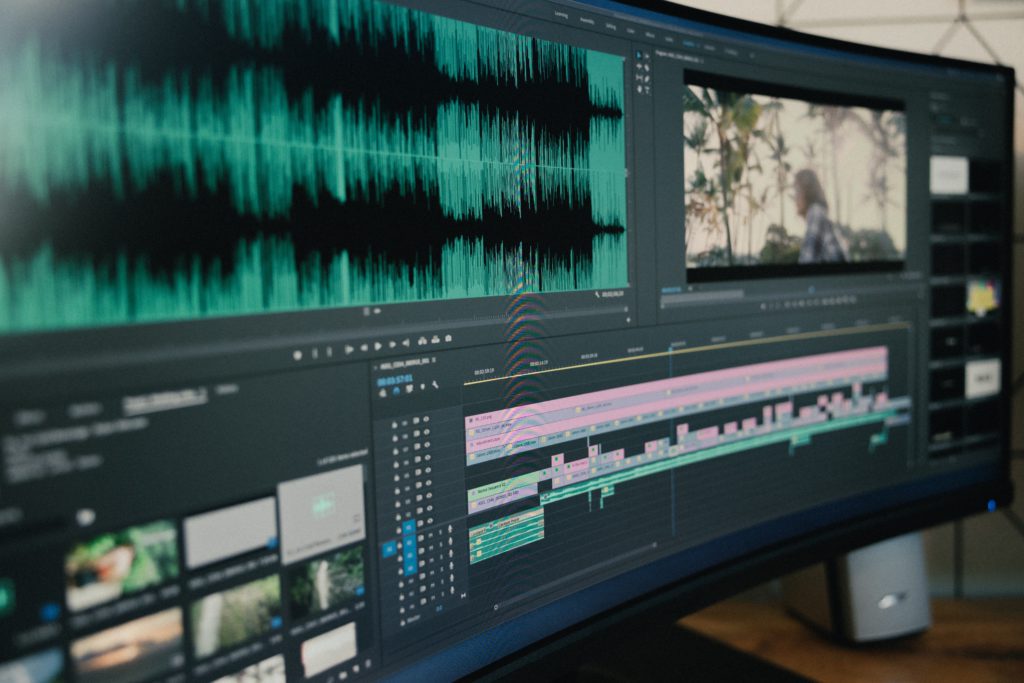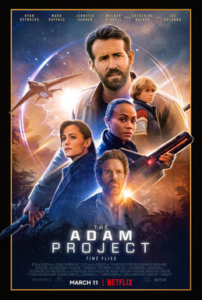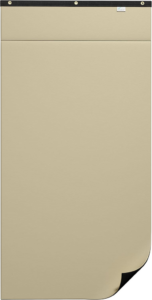Freelancing can sound scary for people who imagine themselves having a cushion of safety that is provided by an office job. However, with the changing trend, it will be not wrong to say that the majority of people are searching how to become a freelance editor. Already various technological developments support and ease the process of freelancing.
With growing interest in eye-catching media such as videos, most businesses and firms are demanding quality video content that can help them promote their brand. Various professional editors are already looking out to working on their own instead of being tied to a company or agency.
This is how a freelance editor’s life looks like:
Freelancing allows editors to select the projects that they want to work on as they gain experience by taking up projects that can enhance their resume. It also allows one to work on their own time and set their own hours. You can travel around the globe while working parallelly. Working as a freelance editor will benefit you, even without the cushion that ensures a constant salary.
Are you wondering how to become a freelance editor? The process includes some basic steps such as finding clients, maintaining deadlines, and constantly working to scale your business. However, before all these steps, you will have to get trained for the job of editing. With multitudes of courses and tutorials, you can learn basic editing by yourself. If you want to create a firm foundation, you will have to enroll in a professional course with a set coursework and credit system.
Video editing is an art. You will have to practice continuously to ensure that you are good at it. As an editor, you will be expected to know how to operate various editing tools, have a creative streak, unique outlook, and good communications skills so that you can understand the exact needs of the client.
Is Video Editing Worth It?
You should have a complete understanding of the profession that you are signing in for before making a decision. If you are still confused regarding the scope and profitability, then some se statistics may help you.
- 80% of the internet traffic from consumers is used to stream videos on various platforms
- 80% of marketing professionals believe that video content has become immensely important in the work of business and marketing
- 71% of B2B use video marketing, while 66% of B2C use it for their marketing campaign
- 1 billion hours of YouTube videos are watched daily
The data brings in the context that videos are becoming the preferred choice of media for marketing. There is already a large audience active and present to watch content. It also shows that there is a surge in the number of platforms that support video streaming. Be it Facebook, Instagram, YouTube, Twitter, or any other social media website, most of the content present is in the form of videos.
Thus, there is a huge platform and attention available for videos. Various firms and organizations need a talented video editor that can refine and create quality content that can stand out on these platforms.
When is the Right Time to Transition into a Freelancer?
Before answering how to become a freelance editor, the first question that should be addressed should be whether freelancing is worth it. The answer depends upon two factors: your experience and your attitude towards work. If you are already well-aware of the world of editing, then it will not be difficult for you to transition into freelancing. You already know the ins and outs of the business and might even have numerous connections that can help you kick start your freelancing business.
However, if you are new to the field and do not have much experience, you can begin understanding the industry by working with or under professionals. You can join a company, get an internship, or collaborate with other experienced professionals. These will help you gain experience and expand your network.
It is beneficial to have some professional work experience added to your resume before you set out as a freelancer. Most clients will refer to your resume before deciding whether to hire you or not. Having an impressive and inclusive resume will make sure that you bag the offer.
Additionally, it will also help to have a portfolio or channel ready before you begin sending out applications or emails to clients and recruiters.
Steps to Become a Freelance Editor
By now, you must have decided if the field of video editing and the lifestyle of a freelancer is for you or not. Freelancing can indeed be unpredictable. There will be months when you will have so many projects lined up that you might have to refuse some, while during other months, you will cross out your entire network list but will fail to get a project.
But freelancing also provides you with the opportunity to become your own boss. You can choose which clients you want to work on and which projects are worth taking. Here are the steps that you will have to follow to become a freelance editor.
Arrange your equipment and hardware

Most people believe that the first step to getting clients that will hire you for their projects. While that is important, you will first need to arrange the proper equipment. Most freelancers work from their homes. Set up a separate space in your home where you will work.
Editing requires certain hardware and software that you will need to arrange before you begin taking any projects. Make sure that your computer is working in a smooth condition. A computer that crashes frequently or keeps facing certain issues will make you miss your deadline and create a bad impression on the clients.
Here are some equipment that you will need to set up a working space for you as a freelance editor.
- Adequate CPU and RAM that can handle multiple complex timelines without crashing.
- Hard drive and cloud storage space where you can save client footage and end results of the projects.
- Appropriate CPU that can ensure that videos are exported at an affordable time
- A video editing software such as Lightworks, Final Cut Pro, etc., includes all the tools that you might need while editing.
- High-quality headphones and external hard drive to save projects for future reference
Also, note that if you already have these requirements, then you will need to upgrade or maintain them before you begin taking projects.
Emergency funds
Through freelancing, probably, you will not be able to earn a respectable income enough to cover your expenses during the first few months. Unless you have an incredible network in the industry and already have some projects lined up, you are bound to face a shortage in income during the starting months of freelancing.
It is safer to have a reasonable amount of money saved up as emergency funds during these months. The funds will help you manage your expenses as you deepen your impact in the industry. Another option can be to treat freelancing as a part-time job until you begin to get steady work.
Once you begin to get enough projects that you can cover all your expenses and save some amount as well, you can transition completely as a freelance editor.
Create your portfolio
As a freelance editor, you will not be backed by a respectable and esteemed organization. You are on your own as you traverse through clients and gigs. Potential clients will judge you based on your skills. The best way to showcase and prove your skills is by providing them with examples.
For video editors, their portfolio is their resume that is the deciding factor while applying for any job. However, when it comes to freelancing, your portfolio and your past work become your face. The clients will assess your potential and work ethic based on the work that you choose to include in your portfolio.
Any commendable work that you have done in the past should be included in the portfolio. It does not have to include the gigs and projects that you were paid for. You can include the videos that you took as a self-project or those you worked on during your training.
If you want to include a project that you worked on as a part of an organization, then make sure that you receive formal permission from your employee before adding the project to your portfolio.
If you find that your portfolio is lacking, you can build it up before showcasing it to the clients. You can consider working for non-profit organizations for quick projects or complete an online internship for a month or two. Ensure that you get certificates and acknowledgments in exchange for your services from these organizations to include in your resume.
Know the behind-the-scenes work
While working on your own, you will come across various tasks that you did not have to tackle while working for a company. Most of these tasks are taken care of by the human resource department of the company or other departments. However, as you are freelancing, you will have to manage them along with the actual task of editing videos for the clients.
These tasks include creating and drafting a contract that details the exchange between a client and you. You will also need to send out invoices and file your taxes by yourself. Along with that, you will need to manage your hours and clients.
During a day job, it is easy to follow a routine as you have to give a set number of hours to your work. Your office hours are predefined and rigid, ensuring that you do not end up working overtime or undertime. However, as you freelance, you will find that it is easy to get distracted by other tasks. The result of mismanagement of time will be a failure to keep up with the deadlines.
If you have what it takes to be self-sufficient and well-managed, then you will face in the field in no time. You can even hire a manager or assistant that can take care of such tasks once you begin getting enough projects.
There are also various tools available these days that make these tasks much easier. You can schedule your time, manage your invoices, track your expenses, etc., using tools and apps available online.
Find your first client
Now that you completely understand the details of working as a freelance editor, the next step is to get a client. Some freelancers claim that finding the first client was the hardest part. If you have no professional experience, then the task becomes especially hard. You might have to provide your services for free or a lower rate to bag the first project.
Do not hesitate to compromise on your rates during the first few projects. It is time for you to gather experience and build an impressive portfolio and a strong clientele. Also, make sure that you provide the top-notch end product. High-quality work may result in the client asking you to get on board for multiple projects. It will also make sure that you create a good impression and reputation in the industry.
If you find it hard to reach out to a client or are facing issues in getting a positive response, you can try various freelancing job sites such as Upwork, Truelancer, Fiverr, etc. Here, you can find potential clients that offer considerable pay for your services. However, note that getting a gig at such sites is extremely difficult because of the high competition.
You can opt for a direct approach and get in touch with people that may need an editor. While browsing YouTube, you might find some channels that are booming. You can contact them and help them increase the quality of their videos. Similarly, you can find potential clients at other streaming and video-hosting websites.
If you already have some experience in the field, then you can contact someone from your network and ask them to match you up with a company in need of a video editor.
Transition into a full-time freelancer
With time, you will find your footing in freelancing and get regular clients. Once you have started making enough money to match your goals, you can leave your day job and transition into a full-time freelance editor. How do you know when the time is right for this transition? When you have quite a few long-term clients, contacts that you can fall back on in case the work is slow and have enough savings.
As a full-time freelancer, you might need to monitor your expenses and income more closely. You will be earning from multiple sources, some with big pay and some with small. You will have to keep track of them all to manage your expenses and your taxes.
You will also have to invest in your workspace to upgrade your equipment and software. As you begin taking varied projects, you will find that you need specific software for some projects.
Furthermore, you will also have to spend some time to ensure that you have a system to manage your projects. You should schedule your projects and deadlines efficiently so that you can work on multiple projects without any overlaps.
Expand your business
There will come the point that you will have too much work to handle it all alone. If you are confident in your abilities as an entrepreneur, you can take your business to the next level by hiring new staff. You can employ an assistant or substitute editor that can handle menial tasks which you can build upon.
You can also get a videographer who can record raw footage for any project that you might come across. You can even get enough staff to handle most of the editing by themselves while you manage the clients and your team.
If hiring staff seems a bit extreme to you, you can take the help of copyright-free content available online during editing so that you do not have to work from base up.
How much should you charge for your services?
Most new freelancers make the mistake of underselling or overselling themselves. While the former can hurt you financially, the latter can cause you to miss some good opportunities. It is fine to agree with the pay offered by the client during the first few projects. However, once you have gained enough experience and confidence, it is better to set a price for your services.
Setting a definite price will make your services look more credible. Make sure that you charge differently based on various factors and aspects of the video. You can also choose to charge by the hour for your services or base your pay on the project. Here are the factors that can help you decide the price that you should set for a project.
- Services
Are you offering only editing under services? Most editors also offer to direct, film, etc. If you can provide these services, you can charge separately for them.
- Video length
Whether you choose to charge by the hour or based on the project, the run length of the video will be a major factor in deciding you are charged. The longer the video, the more the pay will be.
- Scope of editing

The client may ask you various requests that come under editing, but most people do not add while deciding the pay rate. Requests such as adding voiceover, animations, etc., come under extra work and should be charged accordingly.
Some Tips to Ease the Process of Working as A Freelance Editor
By now, you have understood how to become a freelance editor. It is a lucrative business method that has numerous prospects. However, one cannot deny that it comes with its own problems. It is essential that through the process, you stay well-managed and on your toes. It may sound complex and too much work to handle, but the end results and freedom are worth it.
Here are some tips that can help you to make sure that you work impeccably as a freelance editor.
- Time yourself
While working on a project, ensure that you have set a timer to track yourself. This is especially essential if you charge per hour. You can use various apps and software for this. Even if you do not charge by the hour, tracking the time it takes you to complete a project will help you better manage your time.
- Take smart breaks
During the first few months, you will find yourself short of time as you tackle various tasks involved in freelancing. You must take breaks smartly to save time. You can take a break from your work as your file is exporting or rendering. These processes take considerable time during which you can get some fresh air and exercise.
- Label
Organize all your files, projects, music files, graphics, animations, etc., in a way that you can locate any file quickly. As a freelancer, you will need to work faster. There are various options for editors available to the client. To ensure that your project stays with you, you will need to make sure that your work is efficient and turned in before the deadline.
To achieve this, it is essential for you to arrange and label all your files and folders, along with your external hard drives.
- Have a file sharing service
Working as a freelancer, you will find that you constantly need to share files and access them from remote locations. Thus, you should have a cloud storage and file sharing service that works smoothly and allows you to access your files from anywhere.
You can upload your frequently used graphics and tools along with your recent projects on the cloud for more efficiency. Various services like Google, Dropbox, etc., work perfectly and are free to some extent.
Freelancing is a great way to enhance your growth. You will find an exposure that is not possible while working under a company. If you have great management skills, discipline, and are ready to invest in personal equipment, then freelancing can be a highly beneficial and economic path for you. The future lies in working remotely, and by opting for the lifestyle of a freelancer, you ensure that you will have a constant workflow in any case.














